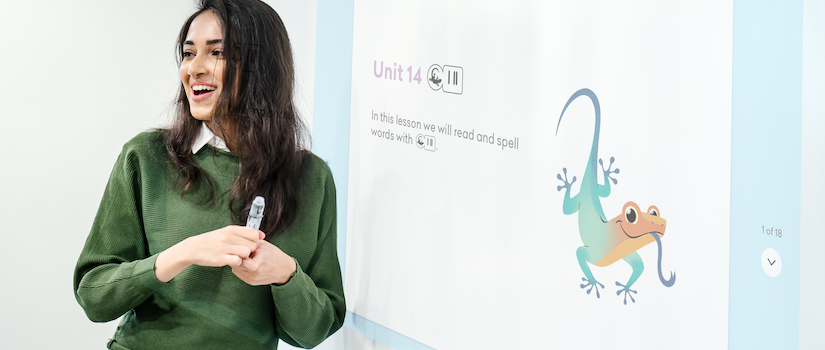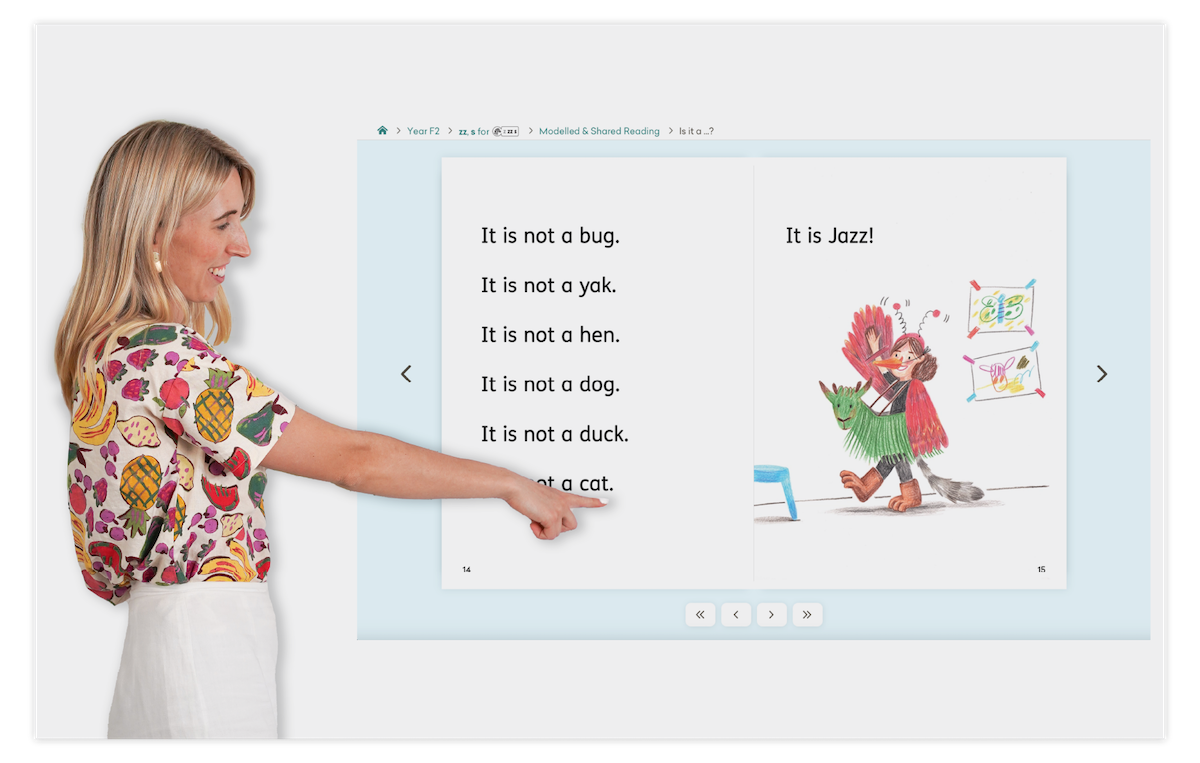Articles & Videos
How to ensure your early years reading instruction is effective
Categories
Subscribe to our newsletters
Receive teaching resources and tips, exclusive special offers, useful product information and more!
Back to Product Features articles & videos
How to ensure your early years reading instruction is effective
Sound Waves Literacy 30/5/24

The teaching of reading has always been a hot topic. With recent updates to the curriculum, the release of the Queensland Reading Commitment and the new Grattan Institute report outlining the large number of Australian students not mastering the necessary reading skills, schools are actively seeking to implement effective, evidence-informed reading practices and resources.
The message is clear – for schools hoping to improve their students’ literacy outcomes, using Decodable Readers as part of their systematic synthetic phonics instruction is vital.
Why Decodable Readers?
In order to develop reading comprehension skills, students need strong word recognition and language comprehension skills. While children’s literature is designed to develop language comprehension skills, Decodable Readers are specifically designed to develop word recognition skills.
Word recognition is not defined as recognising each word as a ‘whole’, but instead processing all phoneme–grapheme relationships within the word quickly so it does not consume conscious attention. This skill takes a lot of practice to develop in beginning readers.
Decodable Readers are short texts that only contain the phoneme–grapheme relationships students have been explicitly taught. These books give students specific opportunities to apply their phonemic awareness and knowledge of phoneme-grapheme relationships, which over time leads to quick and accurate word recognition.
Simply giving students random Decodable Readers to read is not going to set them up for success. The decodable texts you use with early years students need to align with your synthetic phonics teaching. With Sound Waves Literacy, all bases are covered with our seamless teach, model, apply lesson sequence.
Let’s unpack how Decodable Readers are integrated in the Foundation and Year 1 lessons of the Sound Waves Literacy program.
Teach with online teaching resources

Use the Sound Waves Literacy online teaching resources to deliver your weekly lessons and explicitly teach phoneme–grapheme relationships and Special Words.
The comprehensive lesson guides and interactive slideshows ensure you can systematically teach phoneme–grapheme relationships in a quick, engaging and effective way.
Model with projectable Decodable Readers (new!)

Embedded in the lesson sequence at Sound Waves Literacy Online, you’ll find projectable Decodable Readers that are ideal for modelling reading to the class.
Whole-class modelled reading is a great way to focus on phoneme–grapheme relationships and Special Words, and reinforce the learning from your Sound Waves lessons. In each unit, we recommend using the Core books for whole-class teaching but, depending on the overall ability of your class, you could start with the Support or Extended books.
To ensure your whole-class modelled read is effective, be sure to demonstrate:
- identifying and decoding words with the focus phoneme–grapheme relationship/s and any Special Words
- reading from top to bottom and left to right
- responding to full stops, exclamation marks and question marks
- pausing to think about the meaning of words.
Apply to Decodable Readers

After you’ve taught the focus phoneme-grapheme relationship and modelled reading using the projectable Decodable Reader, it’s time for Foundation and Year 1 students to apply this knowledge to reading practice.
There are a number of ways students can use the Sound Waves Decodable Readers throughout the week.
In-class independent reading
In-class independent reading is great for phoneme–grapheme revision and fostering autonomy.
For successful independent reading, provide each student with a Support, Core or Extended Decodable Reader depending on their reading ability. Students should be able to read the Decodable Reader on their own and without teacher prompting.
Paired fluency reads
Paired fluency reads are a highly effective and time-efficient way to encourage students to develop their reading fluency while keeping them engaged with reading practice.
For paired fluency reads, students should be able to read the Decodable Reader accurately on their own without prompting.
Pair students according to their level (Support, Core or Extended) and ensure each student has their own copy of the relevant Decodable Reader, then:
- Ask one student to read aloud for a designated amount of time (set a timer), while the other student tracks the words with their finger.
- When the time is up, tell students to swap roles.
Small-group reading
Small-group reading is also great for developing reading fluency and fostering meaningful peer interactions, while also allowing you to provide the appropriate level of support to each group.
Group students according to their level (Support, Core or Extended) and ensure each student has their own copy of the relevant Decodable Reader, then:
- With the students, read the title of the book aloud and discuss what the book might be about. Revise the focus phoneme–grapheme relationship/s and Special Words using the Warm Up on the inside front cover.
- Have students read the text aloud. Help students decode unfamiliar words. Discuss unfamiliar and interesting vocabulary.
- Have students recall key facts and reflect on the text using the Book Chat questions at the back of the book.
Intervention
Some students may require intervention sessions which can be used to reteach and reinforce phoneme–grapheme relationships and Special Words.
In your one-on-one or small-group intervention sessions ensure each student has their own copy of the relevant Decodable Reader. Educators working with Year 1 and 2 students may like to use the Foundation Decodable Readers for intervention. Likewise, the Year 1 Decodable Readers can be used in intervention sessions with Year 2 (or older) students.
Home reading
Home reading is another great way to support the development of reading comprehension – after all the goal is to provide students with as many opportunities as possible to practise their reading skills.
When using Decodable Readers for home reading, we recommend sending home books that feature previously taught phoneme–grapheme relationships so students can read the Decodable Reader accurately without prompting. Don’t forget to let parents know about the ‘How to Support Students During Reading’ information at the back of each of the Sound Waves Decodable Readers.
Ultimately, it’s ideal to use a combination of instructional approaches to give students multiple opportunities to practise reading.
Want more? Book free professional learning
Our team provides free training and support to ensure the successful implementation of Sound Waves Literacy resources. The professional learning workshops are run by our highly experienced and knowledgeable team of education consultants, who are former classroom teachers, curriculum leaders, intervention teachers and principals.
Request a workshop for your school, register for one of our online virtual workshops.
In addition you can browse our professional learning articles, or contact us with any questions you have about Sound Waves Literacy.